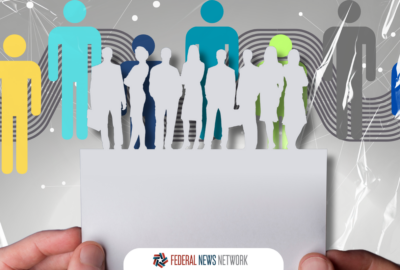Federal HR leaders rethinking employee engagement by embracing feedback
The Customs and Border Protection and the Department of Housing and Urban Development are two agencies making small HR adjustments to try to make a big impact.
Improving customer experience has been a pillar for agencies during the Biden administration, and many agencies are considering smaller, more creative routes to address that goal.
One of the key ways to improve customer experience on the tail end is to first focus on the experience of internal employees, a few federal HR leaders said during an ACT-IAC event Wednesday.
The Customs and Border Protection, a component of the Department of Homeland Security, is one agency that has been focusing on small, specific steps to support the satisfaction and engagement of employees at work.
Many CBP employees spend their work hours on site — not in an office setting — which makes it all the more important for them to be able to quickly and easily access HR information on benefits, retirement and performance management, said Alex Austin, chief of the strategic transformation management branch in CBP’s HR office.
During the COVID-19 pandemic more HR documents and forms began shifting to online platforms, Austin said. At the same time, CBP’s HR office began considering ways to help manage and anticipate the workload for agency employees.
That led CBP’s HR staff to begin asking employees for their projected retirement date, so the HR office could more efficiently and proactively begin working on the retirement processing steps.
“That has [become] a full-blown retirement and benefits solution that walks people through workflows and answers questions, feeds them the documents that they need, and then works through real-time case statuses,” Austin said during the ACT-IAC event.
Moving forward, CBP’s HR office is looking at routes for further federal HR modernization — for instance, by pulling existing workforce data into the HR portal to make it easier for agency employees to easily find information on their benefits enrollments.
CBP plans to use employees’ direct input, Austin said, while working on updating the platform with even more on performance plans and benefits submissions.
“A lot of what we’ve developed so far is driven by feedback that we’ve heard in the past, and we finally reached either that ability to deliver it — or we’re still working towards meeting their expectations and delivering it in the future,” Austin said. “As we think about rebuilding those processes from our old legacy system to this new system, we’re building systems that work for HR, but we’re also going out and talking to the workforce at all levels. Not only does it uphold the HR processes that need to be upheld, but also makes it super easy for employees coming through and trying to accomplish their tasks.”
At the Department of Housing and Urban Development, workforce leaders are similarly considering ways to improve the employee experience, while also incorporating feedback directly from agency staff.
Now a couple of years after A’ndrea Jones, HUD’s acting director of performance management, launched a “Synergy Innovation Lab,” the agency has incorporated ideas from employees aiming to boost employees’ satisfaction at work.
The goal of the innovation lab, first started at HUD in 2020, is to provide a space for employees to collaborate on new ideas to improve federal HR, workforce development and employee engagement.
“We involved all of the employees from the field offices to headquarters, from GS-15s to new employees, we had some of our SES come in to actually share their experiences,” Jones said during the ACT-IAC event. “People want to be involved — they want an experience where they can contribute to how we’re doing things differently.”
Additionally, many federal HR leaders have been turning their attention to the employee experience as something involving more than just the hands-on work employees do, and moving toward a broader approach to employee wellness.
Last May, new employee wellness guidance from the Office of Personnel Management adjusted the expectations for agencies. The guidance calls on agencies to consider the mental, emotional and physical aspects of an employee’s health and wellness and create a more comprehensive look at employee wellbeing.
Agencies can develop their wellness programs to offer fitness classes, mental health and wellness seminars, suicide prevention training, and peer support programs, OPM said in the guidance.
OPM has also recently launched “Mindful FED,” a community of practice for employee wellness that offers courses on stress reduction, attentiveness and more.
As a result, agencies have said that providing more resources for employees yields better engagement — and therefore higher productivity and improved customer experience.
“It’s about how we can work with one another to move forward in a way that’s going to create better outcomes, not only for our customers, but for our employees,” Jones said. “It’s up to us to create an environment where employees can contribute in that way.”
Copyright © 2024 Federal News Network. All rights reserved. This website is not intended for users located within the European Economic Area.
Drew Friedman is a workforce, pay and benefits reporter for Federal News Network.
Follow @dfriedmanWFED






